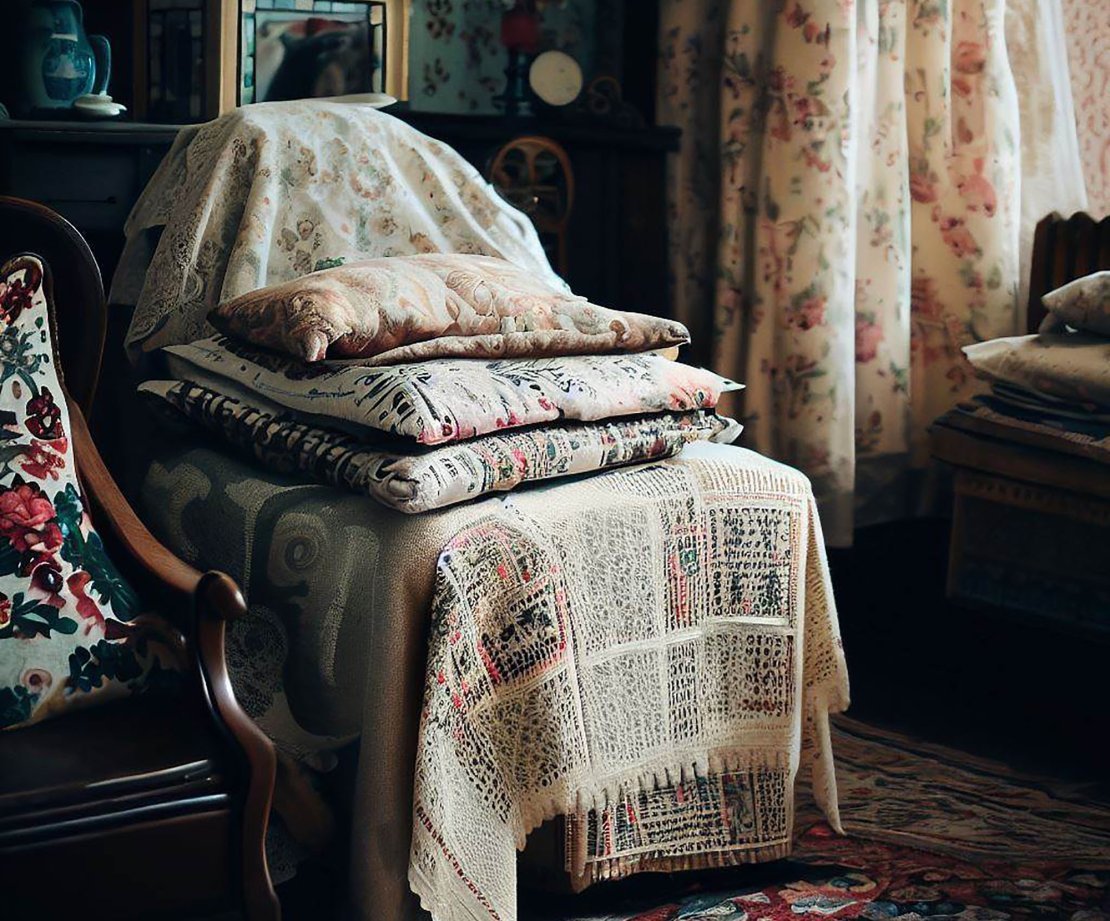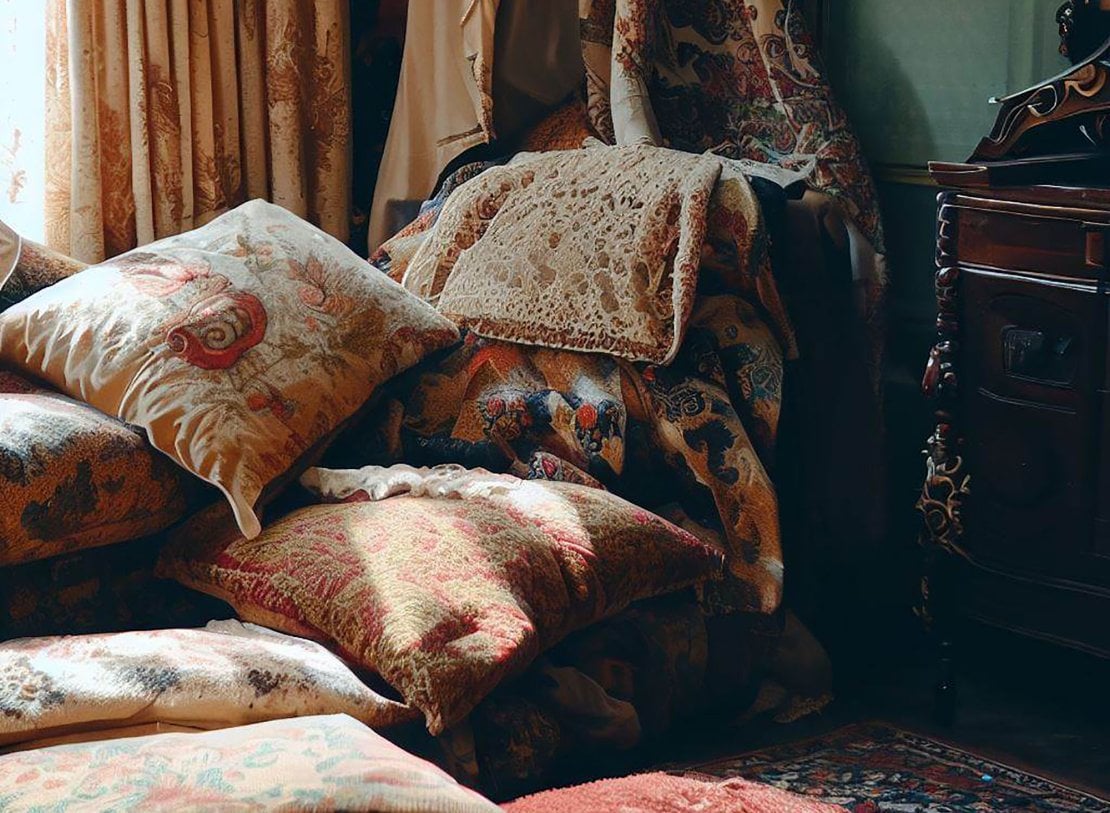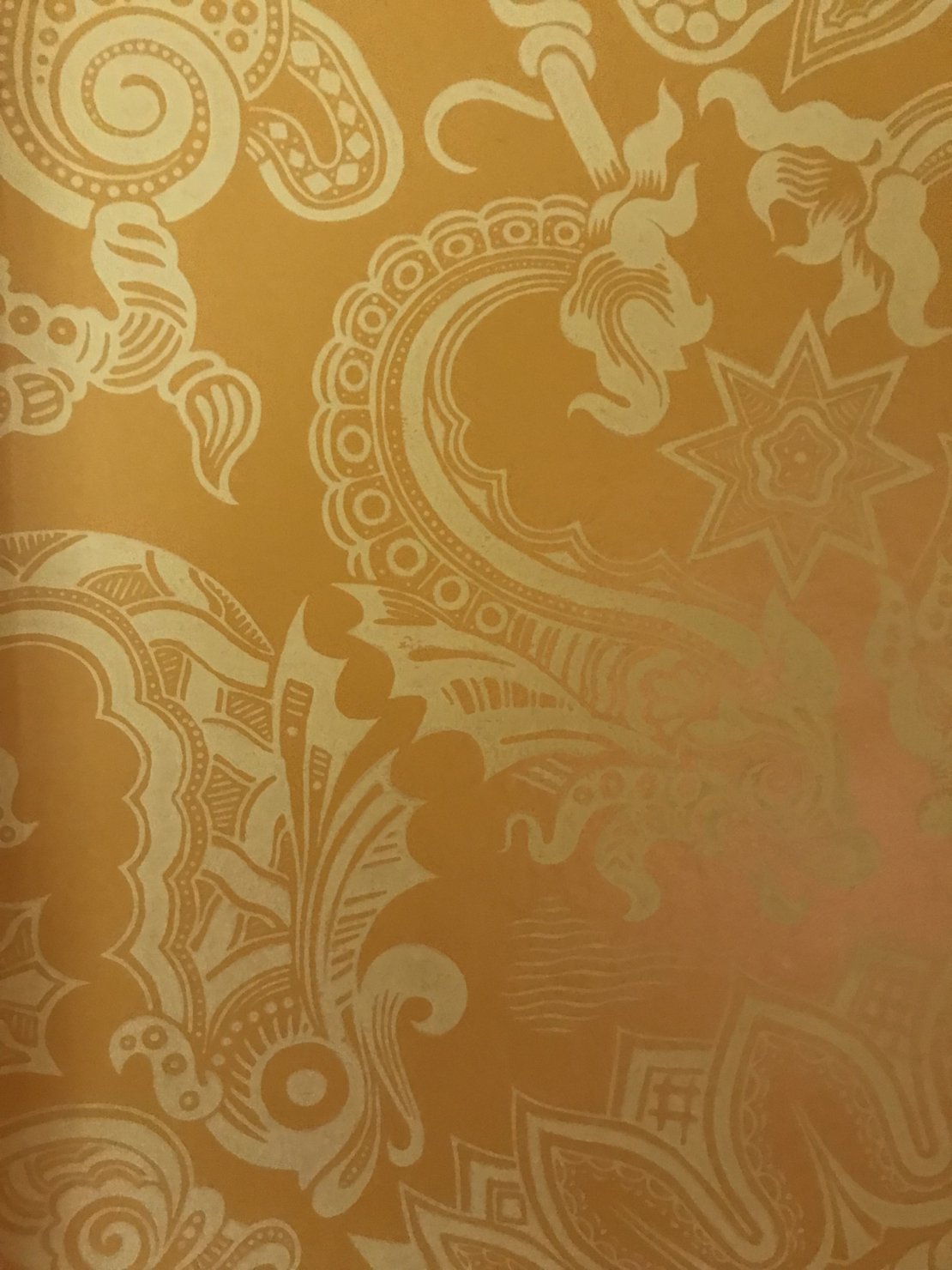The essential aspects of middle class Victorian interior design are highlighted by a preference for deep, dark colours as well as a wealth of luxurious design choices.
- Colours: The earlier parts of the Victorian period favoured dark tones such as burgundy, ruby red, forest green, dark blue, and deep brown, whereas the later parts of the era made brighter hues and pastels popular.
- Patterns: The early Victorian period featured patterns that were based on floral motifs. Darker colours, which were necessary during that period when the majority of homes were heated by coal, are more strongly connected with the era. Darker colours hide the dirtiness of smoke and ash better than light colours. Hence darker colours are more closely associated with the era.
- Furnishings: The period did not have a signature style of furniture, although an abundance of decorative flourishes characterised the period's furniture. Pieces of Victorian styles of furniture, such as button-back chairs, chaise longues, and ottomans, were typically decoratively carved from richly coloured wood and over-stuffed.
- Lighting: Light fixtures and candles play a significant role in the design of spaces in this style. This is particularly true in places such as dining rooms, living rooms, sitting rooms, and hallways. Not only were Tiffany lamps popular for use as table lamps for coffee tables or standing lamps to sit on the floor during this period in Victorian houses, but also for use as wall sconces, chandeliers, and other types of lighting that featured glass lampshades.
- Ornaments and accessories for the home: Victorian interior design features accessories and decorations that are boldly exhibited and cover every available surface. Some examples include a wall of framed photographs, displayed china, souvenirs, vases, and lace, the last of which might be placed on the backs of furniture, on tables, or on mantels.
Other examples include china and souvenirs, embroidered cushions to embellish sofas, while palms and ferns were frequently used as pot plants. Another technique for adding colour to spaces was the use of stained glass in lighting and windows. - Coverings for the windows and walls: The windows were adorned with luxurious window treatments, such as curtains lined with silk or wool. These Victorian curtains were made of heavy cloth. Paints used were deep rich hues that were popular during that time, or covered with tapestries or wallpaper featuring botanical themes. Walls were often painted to appear as if they were marble or wood grain.
- Floors: One of the most popular types of flooring during this time period is wood, specifically in the form of parquet patterns. Mats, floor cloths that were very similar to linoleum, carpeting (including broad weave, Venetian, and reversible), and tile floors with a repeating geometric design in the middle were all common types of the flooring during this time period.
Textiles were not mere coverings but declarations of social status and refined taste. What better way to pay homage to the Victorian age than by incorporating vintage textiles into our modern abodes?

The art of weaving narratives through textiles is a time-honoured tradition. As with any art form, true mastery lies in the ability to discern the extraordinary from the ordinary.
A Victorian-themed room demands a careful balance between tradition and innovation, nostalgia and modernity. The key is to blend the old with the new, to juxtapose the elegance of the past with the functionality of the present. Picture a majestic four-poster bed draped in sumptuous damask curtains, their intricate patterns dancing under the soft glow of a vintage chandelier. Accompanying this opulent centrepiece, a settee upholstered in luxurious velvet, adorned with embroidered cushions depicting scenes from classical mythology. Such a room becomes a stage, a canvas for the narrative of a bygone era.

In our pursuit of authentic Victorian textiles, we must cast our net wide, for treasures abound in unexpected places. Antique markets, secondhand shops, and even attics may yield forgotten remnants of a past era. Look for Victorian fabrics with intricate lacework, delicate embroidery, and rich brocades—the hallmarks of Victorian opulence. Seek out faded florals, paisley motifs, and velvet velour, for these are the visual motifs that will transport you to another time.
However, incorporating vintage textiles into a Victorian-themed room is not without its challenges. Time leaves its mark on even the most resilient of fabrics, and restoration becomes an essential skill. Do not shy away from tattered edges or worn-out surfaces; instead, embrace the patina of age, for it is in these imperfections that the true character of a piece is revealed. Meticulous restoration can breathe new life into a weathered textile, while retaining its historical integrity.

It is important to note that upholstery fabrics are unlikely to have withstood the test of time and are best purchased new in one of the widely available patterns that emulates the original Victorian designs and that are in mass production. William Morris fabrics are always a safe choice although expensive.
As we weave the narrative of our Victorian room, it is crucial to pay homage to the era's commitment to craftsmanship. Seek out skilled artisans who can create bespoke pieces inspired by the Victorian aesthetic. Upholsterers, seamstresses, and embroiderers—these guardians of tradition can bring your vision to life, ensuring that every stitch and every thread is infused with the spirit of the age.
In the end, incorporating vintage textiles into your Victorian decor is an act of storytelling—a means of connecting with a forgotten past and infusing it with new vitality. It is a tribute to the grandeur of an era that valued beauty above all else—a visual symphony that echoes the splendour of the Victorian age.


Be the first to add a comment...